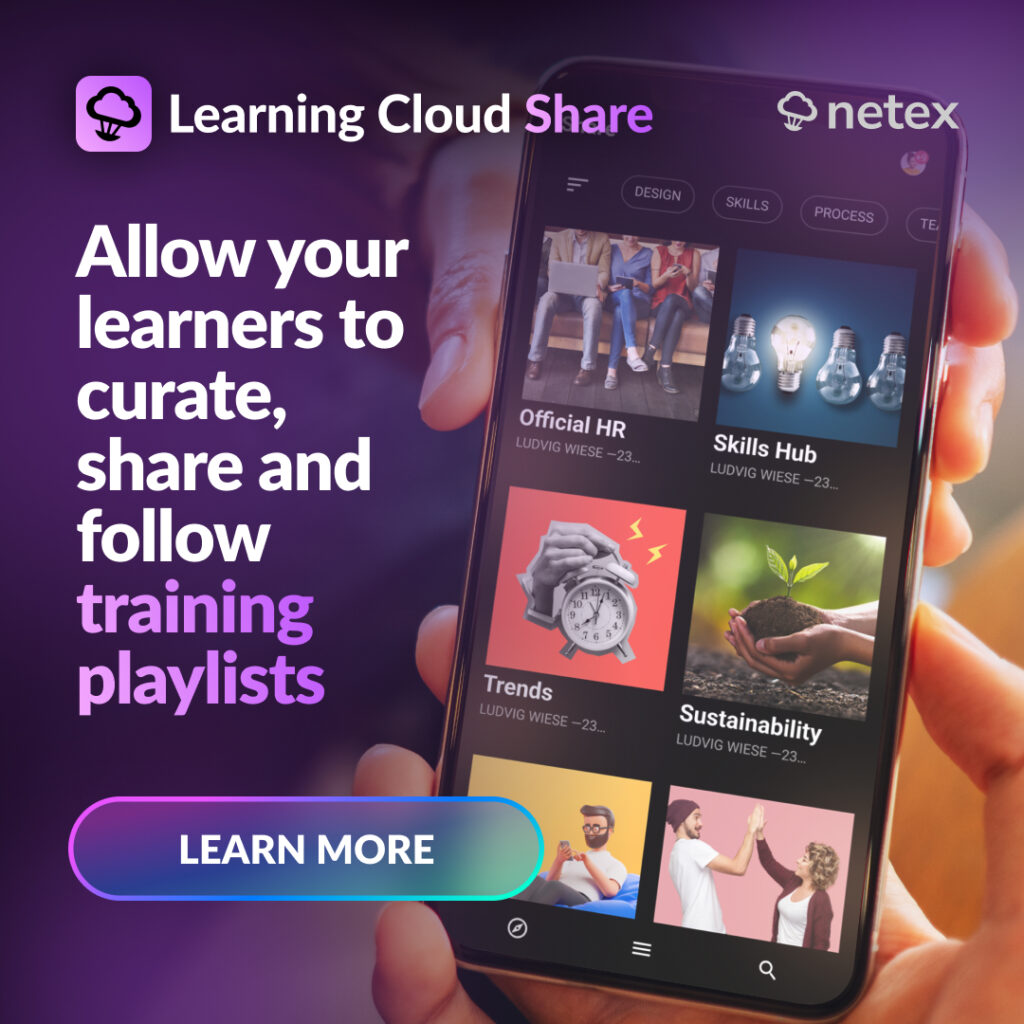Share
There’s been a lot of excited talk about social learning and how it can shake up and revolutionise our workplace training programmes. But what is it, and how does it actually fit in to our L&D strategies?
Aiming to answer these questions, we share our ideas about social learning, the benefits it brings to a company, and how it can be implemented into an organisation.
What is social learning?
Social learning is the sharing of content, ideas and information, and is very similar to how we learn in our everyday lives. We’re always doing it, always passing on useful videos, links, pieces of advice to our friends, family and colleagues who need it. We don’t necessarily have to turn to an expert anymore to find out the answers. That is social learning.
We even do it in the workplace, but it’s so natural that we don’t recognise it as learning. The instructions you shared about functionality in Excel, or how to animate PowerPoint? That’s technically social learning, and it’s this learning approach which organisations are wondering about, asking themselves what it adds to their organisation and, importantly, how they can go about implementing it.

Social learning and learning cultures
Social learning can bring many benefits, many around the part it plays in creating a positive learning culture. First, it puts learning at the heart of an organisation as it demonstrates a love of learning. It also encourages lifelong learning, and acknowledges the diverse range of skills within the company and encourages them to be shared. Lastly, it connects departments who may not share a learner journey, and asks people to collaborate on learning, and continue learning outside of formal settings.
If this is the type of collaborative learning culture you’re looking for, then social learning may be what you’re after.
Find the right tools
But for social learning to work, you need the right tools. But what do they look like?
Imagine the ultimate content sharing tool. One that, like platforms such as Spotify, uses playlists to present, share and collate content. Employees could create playlists and populate them with content they felt was useful. For example, say someone wanted to share insights into learning technologies. They could set up a playlist and add helpful articles, podcasts, links to relevant books, websites – anything that they thought suitable. To share the playlists with others, they simply make them public, but if they decided to make a personal playlist for themselves, then they can keep it private.
Social learning tools like these allows conversation and dialogue, as learners can comment on the content or contact the authors of the playlists. If learners like an author’s content and want to make sure they don’t miss out, they can ‘follow’ them, ensuring they always see their latest. As you can see, it ticks boxes for collaboration, sharing, and continuous learning. In essence, tools like these can be gamechangers.

How you can implement social learning in your organisation
What isn’t discussed enough is the flexibility of social learning, and how it can support your L&D strategy in a number of different ways.
Enhances workshops
Social learning can bring an extra dimension to formal training or workshops and is a useful way to encourage continuous learning. If a training lead wants to take the learning further, playlists could be created and populated with content that the learners could read following the completion of the training. Or, similarly, a playlist could be populated with content that could be read before the training begins.
Showcases employees’ valuable skills
It can also be used to showcase your employees’ abilities and skills. Every company will have some experts, whose insights and skills will be valuable for upskilling others. By assigning them as authors so they can create playlists, they can easily share their insights with the company.
Fills in an internal need where there are no resources
If you find yourself lacking internal resources, social learning can be great for quickly filling in that learning gap. Populating a playlist with relevant content can provide easy access to ‘just in time’ learning that can quickly teach something, rather than the learner having to complete an entire course to gain the information.
Can be open to all
This is potentially daunting prospect, but one that would demonstrate true social learning. Through social learning tools, you can give all your employees the ability to create their own playlists and share content they think would be beneficial to others. It will create a truly collaborative learning culture, and one that demonstrates trust – trust in their ability to contribute, and as a result will illustrate how valuable they are seen.
If you’re curious to find out more about social learning tools, start with our social learning tool, Share. You can visit our website, or watch our quick video.
You may also be interested in:
- How to create training that really changes behaviour
- What makes a good learning environment?
- Why you should invest in your employee’s training and development
Share

